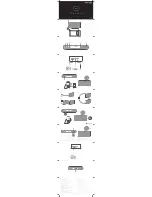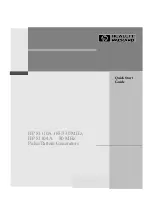
PAGE 58 — DCA400SSI4F/DCA400SSI4F3 60 HZ GENERATOR • OPERATION MANUAL — REV. #3 (04/18/22)
MAINTENANCE
EMISSION CONTROL
The emission control system employed with this
ISUZU
diesel engine consists of a
Diesel Oxidation Catalyst
(DOC) and a
Selective Catalytic Reduction
(SCR)
catalyst as an exhaust gas after-treatment system that
helps reduce harmful gases and destroy the organic fraction
of the particulate matter produced from the exhaust gas
to meet the requirement for EPA Tier 4 (Final) regulations.
The DOC device (Figure 82) helps in filtering out large
amounts of harmful
Nitrogen Oxides
(NOx) and
Particulate
Matter
(PM) which are emitted by diesel engines. These
exhaust emissions pose serious environmental and health
risks. It is important to maintain and service the DOC
emission safety device on a periodic basis.
Diesel Oxidation Catalyst (DOC)
The DOC does not filter particles, it oxidizes them. This
catalyst (honeycomb-like structure) uses a chemical
process to break down pollutants in the exhaust stream
into less harmful components. In general this catalyst
collects/burns accumulated particulates. The DOC contains
palladium and platinum which serve as catalysts to oxidize
hydrocarbons and carbon monoxide.
EMISSION CARBON CHECK
Deposition of carbon (soot, unburned fuel) in the exhaust
pipe line and muffler could cause not only system derates
but also could lead to fires.
To reduce soot and unburned fuel, run the unit at rated
power until the exhaust gas becomes mostly colorless every
250 hours of operation time. More carbon will be generated
when the unit operates at less then 30% of rated power. In
this case, perform the above procedures more frequently.
NOTICE
Applying a large load suddenly to the unit when
carbon deposition has been generated in the exhaust
system could produce sparks and will lead to abnormal
combustion. Therefore, apply load gradually and
observe the exhaust gas color during the process.
Figure 82. Diesel Oxidation Catalyst (DOC)
















































